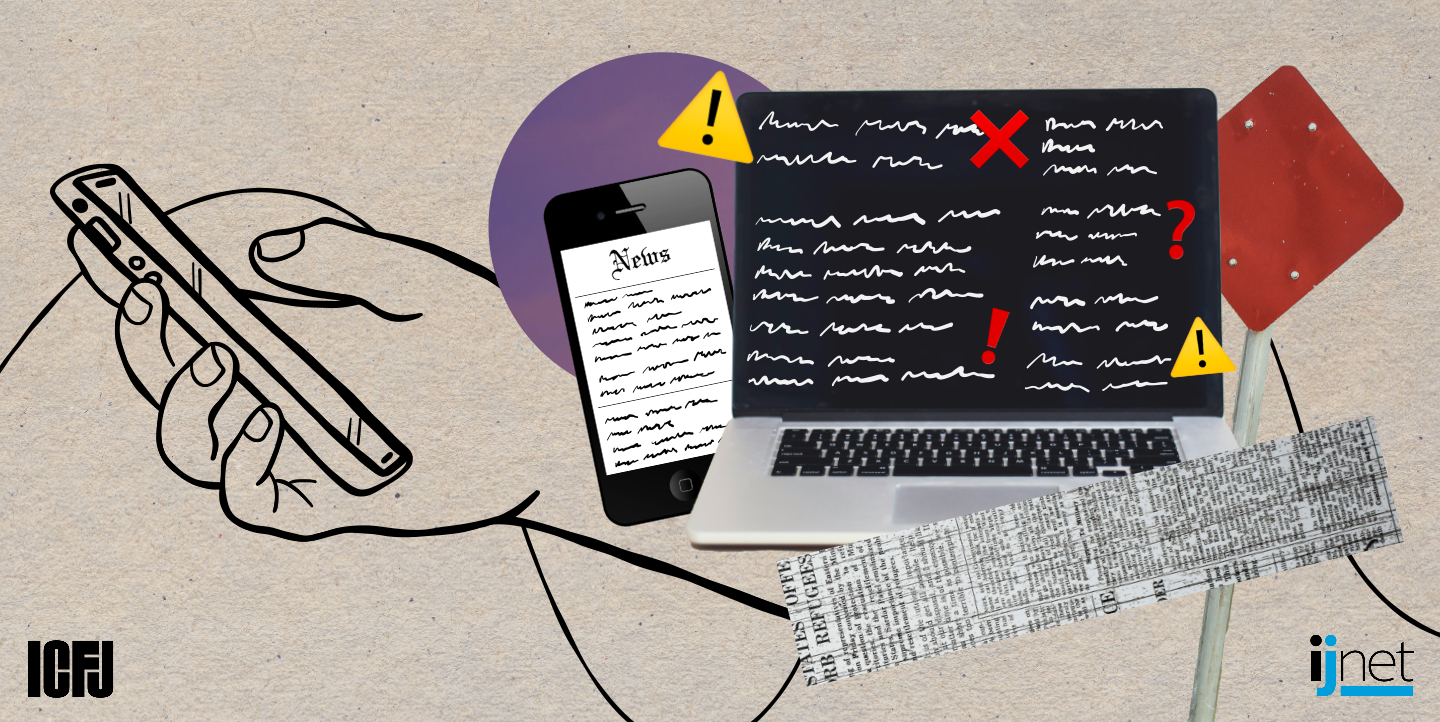Tactics designed to deceive and manipulate people are nothing new. Today, however, there is a major shift in the equation.
Artificial intelligence, advanced editing software and other tools have given false information new life. Journalists are the first line of defense, and those who cover religion are in the thick of it.
This became evident during the COVID-19 pandemic as some religious leaders spread fear about vaccines, and offered dangerous remedies such as ingesting industrial bleach or drinking cow urine as a deterrent. It was left to journalists to set the record straight through accurate, fact-based reporting.
What role does information disorder – consisting of misinformation (unintentional false or misleading content), disinformation (deliberately false information with aim to cause harm) and malinformation (truthful information intended to cause harm) – play in newsrooms? What types of disinformation are circulating? Who is creating it and why? Who supports it? What skills are needed to identify and debunk false content?
The following are steps journalists can take to create verification strategies for their newsrooms:
- Compile a list of experts – academics, researchers, scientists –who specialize in disinformation and ask for their help. Invite them to discuss best practices for dealing with these issues.
- Search the internet for reports, studies and news coverage on the topic. Learn all you can about what information disorder is and how it functions.
- Collaborate with other newsrooms. What tools and resources do they use?
- Follow the money and ideologies to determine who supports disinformation and what they hope to gain by duping the media and the public.
- Develop in-house training for reporters on techniques and tools they can use to spot and debunk false information.
- When disinformation becomes newsworthy, such as the large amounts of false information about COVID-19 vaccine that circulated, report on it.
When it comes to good fact-checking techniques, including on controversial topics like religion, follow these basic rules:
- Develop a critical mindset: Ask yourself, why is this story being written? Is it to push a certain viewpoint?
- Check the source: What is their reputation and professional experience?
- Examine the evidence: Have the facts been selected or twisted to support a particular viewpoint?
- Don’t take images at face value: Use a tool like Google Reverse Image Search to check where an image originated and if it has been altered.
- Use your common sense: Ask yourself, does it sound right?
Along the way, journalists should avoid the “oxygen of amplification” when they report about rumors, conspiracy theories and outright lies.
Claire Wardle, who co-founded First Draft and now leads the Information Futures Lab at Brown University, warned about spreading untruths through traditional news coverage. “All journalists and their editors should now understand the risk of legitimizing a rumor and spreading it further [...] particularly in newsrooms developing misinformation as a ‘beat’ in its own right,” Wardle wrote in a 2018 article.
Among questions she suggests journalists consider:
Who is my audience? “Are they likely to have seen a particular piece of mis- or disinformation already? If not, what are the consequences of bringing it to the attention of a wider audience?”
When should we publish stories about mis- and disinformation? "How much traffic should a piece of mis- and dis-information have before we address it? In other words, what is the ‘tipping point,’ and how do we measure it? On [X], for example, do we check whether a hashtag made it to a country’s top 10 trending topics?”
How should we write about attempts at manufactured amplification? "Should we focus on debunking messages of automated campaigns (fact checking), or do we focus on the actors behind them (source checking)? Do we do both?”
Michael Caulfield, research scientist at the University of Washington’s Center for an Informed Public, created the “SIFT” method for developing fact-checking strategies. The system works in four stages and can be easily adapted to newsrooms and press clubs for professional development on this topic:
- Stop: Pause and consider: Am I certain this information is true? Do not use, repost or share until you verify. Start with a plan, consider what you want to know and your purpose.
- Investigate: Who created the information? What is behind it? Look on fact-checking websites or Google for the name of the source, organization, or other places where the information was used.
- Find trusted coverage: Look beyond the first few results you find. Check at least three different sites. Look for the best information you can find on the topic, or scan multiple sources for consensus. Consider the URL.
- Trace claims: Look for claims and quotes from the source of the information. Trace the content back to the original source to see if the version you have is accurate.
A final word from Wardle: “Every time we passively accept information without double-checking, or share a post, image or video before we’ve verified it, we’re adding to the noise and confusion [...] we have to take responsibility for independently checking what we see online,” she wrote.
Other resources
Poynter’s International Fact-Checking Network: Monitors trends, formats and anti-misinformation actions. Publishes regular articles and a weekly newsletter.
European Journalism Centre: Offers excellent tools for newsroom training on verification skills, including within investigative reporting. Among the resources are Craig Silverman’s Verification Handbooks 1 and 2.
Media Helping Media: Offers free training resources for journalists and media managers.
FactCheckHub: Offers tutorials on how to verify images on the internet with tools such as Google Reverse Image Search, TinEye, and InVid, among others.
Header photo by Gabrielle Rocha Rios.
This resource is part of a toolkit on religion reporting, produced by IJNet under ICFJ's program, Stemming the Tide of Intolerance: A Network of South Asian Journalists to Promote Religious Freedom.

